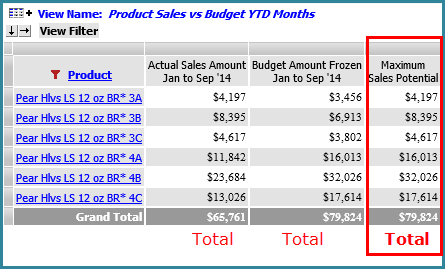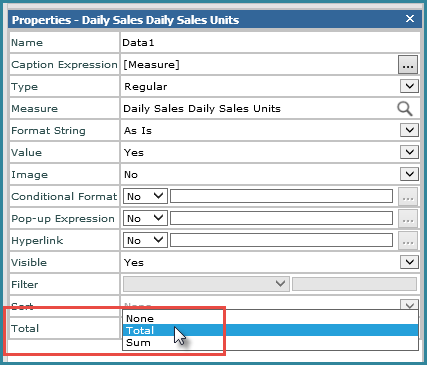
A “Sum” type of total is one of three available Total settings for measure items in Stratum.Viewer (the other types are Total and None). A Sum total designation means that Viewer will generate totals by adding the values displayed in measure item detail cells. That summing will be used to generate the Grand Totals, sub-totals, and All Others.
The Sum type of total is intended for special cases where you don’t want any underlying calculations that Viewer performs to generate detail values applied when generating total values. You might choose to use a Sum total when a measure item calculation includes an IIF statement, such as a calculation with IF, Then, Else conditions.
Two examples follow. The first shows an example of when you would use the Total designation for a measure item. The second shows an example of using the Sum designation.

In most cases, the default “Total” setting for measure items will be appropriate for your views. A “Total” designation takes into account any underlying calculations for a measure item’s definition when generating Grand Totals, sub-totals, and All Others – such as calculations defined in a measure item expression or associated with a Stratum.Planner calculated value.
Here is an example where the Total designation is preferred over Sum. The Average Selling Price has an underlying expression that divides Actual Sales Amount by Actual Sales Units. With the Total designation, the Grand Total is calculated by dividing the Grand Total sales by the Grand Total units sold.
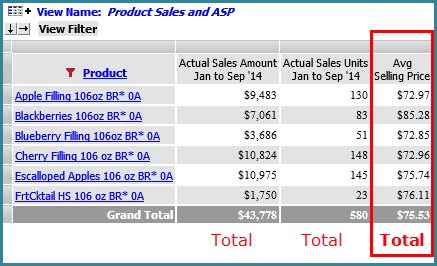
If you had used a Sum total in this case, the Grand Total would be the sum of the Average Selling Price detail values displayed for the six Products in the view. The Total designation is more appropriate than a Sum designation in this case.
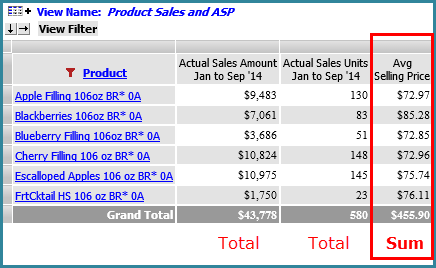
Here is an example where the Sum designation is preferred over Total. The Maximum Sales Potential measure item in the following view is a calculated measure item with an If, Then, Else statement built into it. It displays the actual sales value for a Product if that Product’s sales are greater than its budgeted sales. Otherwise, the calculation displays the budgeted sales value for the Product. The calculation is not applied to generate the Grand Total for the measure item because it has been assigned a “Sum” total. The Grand Total is the sum of the Maximum Sales Potential detail values displayed for the six Products in the view.
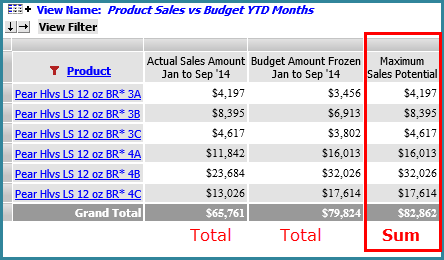
If you had used a Total designation in this case, the results for the Grand Total calculation would display the greater of Grand Total sales compared to Grand total budget. In this example, the Sum designation is more appropriate than a Total designation.
